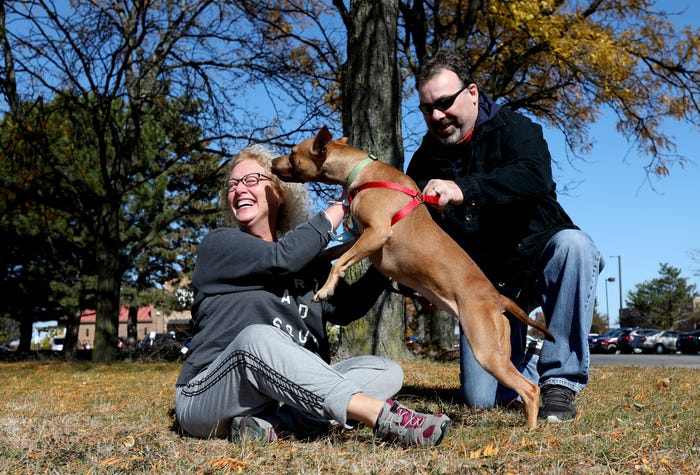
Dog Proofing Your Home: A Health-Conscious Pet Owner's Guide
Share
Welcoming a furry friend into your home is a joyous occasion, but it also comes with responsibilities. As a health-conscious pet owner, ensuring the safety and well-being of your dog is paramount. Dog proofing your home is an essential step to create a safe environment for your canine companion. In this comprehensive guide, we delve into the nuances of making your home a haven for your dog, while keeping their health and happiness in focus.

Understanding the Importance of Dog Proofing
Dog proofing your home is not just about preventing accidents; it's about creating a nurturing space where your dog can thrive. With dogs being naturally curious creatures, they tend to explore their surroundings enthusiastically. This curiosity, while endearing, can sometimes lead them into trouble. From ingesting harmful substances to getting entangled in electrical cords, the potential hazards are numerous.
Creating a safe haven involves identifying and mitigating these risks. By doing so, you not only protect your dog but also ensure peace of mind for yourself. A well-dog-proofed home contributes to your pets overall well-being and longevity, aligning perfectly with the goals of a health-conscious pet owner.
Room-by-Room Guide to Dog Proofing
Living Room
Begin your dog-proofing journey in the living room. Secure all electrical cords and ensure they are out of reach. Consider using cord concealers or furniture to keep them hidden. Small objects like coins, paper clips, and other potential choking hazards should be stored in closed containers or drawers.
If you have houseplants, verify their toxicity levels. Plants like lilies, azaleas, and philodendrons can be toxic to dogs. Consider replacing them with pet-friendly alternatives or placing them in areas inaccessible to your dog.
Kitchen
The kitchen is often the heart of the home, and it can be a hotspot for curious dogs. Ensure that all food items are stored securely in cabinets. Common foods like chocolate, grapes, and onions are toxic to dogs. Invest in childproof latches for cabinets that contain cleaning supplies or food items.
Trash cans should have secure lids or be placed inside cabinets to prevent your dog from scavenging for food scraps. Remember, a little diligence goes a long way in preventing accidents in this high-risk area.
Bathroom
Bathrooms can harbor numerous hazards for dogs. Medications, cleaning supplies, and personal care items should be stored securely. Keep toilet lids closed to prevent your dog from drinking chemically treated water.
Bath mats and towels should be hung up to prevent them from becoming chew toys. Additionally, ensure that any electrical appliances, like hairdryers and straighteners, are unplugged and stored safely after use.
Outdoor Areas
Outdoor areas are extensions of your home that require dog proofing as well. Fencing is crucial to prevent your dog from wandering off or encountering dangerous wildlife. Regularly inspect your fence for gaps or weak spots.
Yard plants, similar to indoor plants, should be evaluated for toxicity. Secure your garden tools and chemicals in a locked shed or storage area. If you have a pool, ensure it's covered or fenced off when not in use to prevent accidental drownings.
Health Considerations for a Safe Home
As a health-conscious pet owner, your dog's health is a top priority. Regular veterinary check-ups and vaccinations are essential to keep your dog healthy. Creating a safe home environment complements these efforts by preventing accidents and reducing stress.
Consider investing in a comfortable dog bed and designating a quiet space for your dog to retreat to when they need rest. This not only supports their physical health but also their mental well-being.
Resources for Further Guidance
For more insights on creating a safe environment for your dog, consider exploring resources like Dog Adoption and Local Laws, which provides valuable information on responsible pet ownership. Additionally, the Four Paws Adoption Guide is an excellent resource for understanding the adoption process and creating a nurturing home for your pet.

FAQs
How can I prevent my dog from chewing on furniture?
Provide your dog with plenty of chew toys and engage them in regular playtime to reduce boredom and the urge to chew on furniture. Training and positive reinforcement can also help curb this behavior.
What are some common household items that are toxic to dogs?
Common household items toxic to dogs include chocolate, grapes, onions, certain plants, and cleaning supplies. Always keep these items out of your dog's reach.
How can I ensure my outdoor area is safe for my dog?
Ensure your yard is securely fenced and free from toxic plants. Store garden tools and chemicals safely. Consider providing shaded areas and access to fresh water during hot weather.
This article contains affiliate links. We may earn a commission at no extra cost to you.
